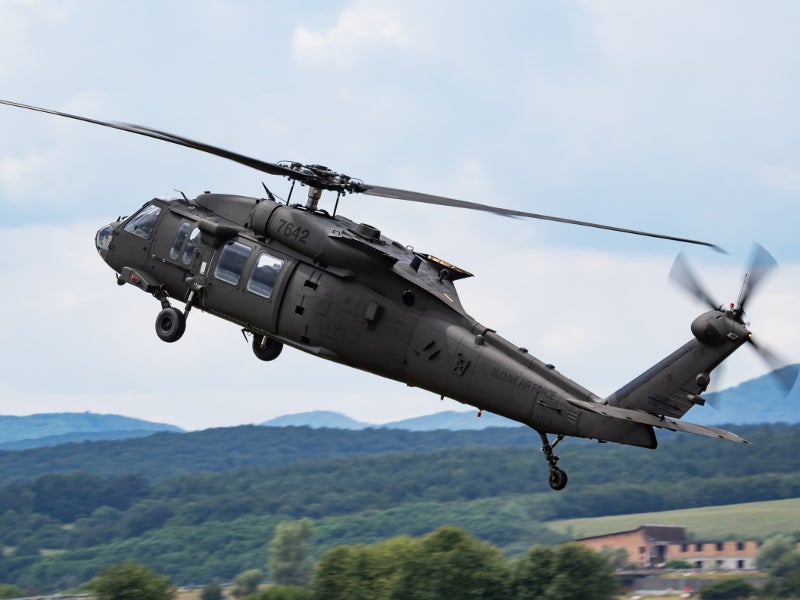Browsing Uh 60 Helicopter Rules and Conformity Requirements

Regulatory Framework Summary
The regulatory structure governing UH-60 helicopter procedures encompasses a facility set of standards and policies established by aviation authorities. These policies are created to ensure the risk-free and efficient procedure of UH-60 helicopters in numerous atmospheres. The Federal Air Travel Administration (FAA) plays a central function in establishing and enforcing these regulations, which cover a large range of functional aspects, including airworthiness criteria, pilot credentials, maintenance demands, and operational procedures.
Conformity with these guidelines is necessary for helicopter operators to preserve the highest degree of security and functional stability. Failing to abide by these guidelines can cause significant consequences, consisting of mishaps, injuries, and regulatory assents. Helicopter drivers should stay informed concerning the most recent governing developments and make sure that their procedures are in full conformity with all appropriate rules and criteria.
Airworthiness Instructions and Examinations
Amidst the regulative framework regulating UH-60 helicopter operations, an important emphasis pushes conformity with Airworthiness Directives and conducting thorough examinations to support security requirements and operational reliability. Airworthiness Regulations (Advertisements) are provided by aeronautics authorities to address unsafe conditions in aircraft, consisting of the UH-60 helicopter, and required particular actions to be taken by drivers or owners. Conformity with ADs is compulsory, and failing to comply with these regulations can result in severe repercussions, including grounding of the airplane.
Routine inspections are extremely important to making sure the airworthiness of UH-60 helicopters. These inspections encompass a variety of checks, from regular everyday assessments performed by pilots before and after flights to a lot more extensive scheduled upkeep evaluations executed by certified auto mechanics. Additionally, unique assessments might be required based on certain problems or events. By adhering to a rigorous inspection routine, drivers can identify and address prospective concerns quickly, consequently improving the security and dependability of UH-60 helicopter procedures.
Pilot Credentials and Training

Pilot training for UH-60 helicopters is detailed and covers a large array of topics, consisting of airplane systems, emergency situation treatments, navigating, and mission-specific training. Additionally, pilots go through simulator training to exercise various emergency situations in a controlled environment. This training assists pilots develop the essential abilities to manage tough scenarios successfully.


Furthermore, recurring training and specialist development are important for UH-60 pilots to remain existing with the newest laws, innovation, and finest practices. By buying pilot certifications and training, drivers can enhance safety and security, optimize performance, and make sure compliance with regulatory needs in the procedure of UH-60 helicopters.
Operational Limitations and Requirements
Pilot certifications and training work as the structure for understanding the operational restrictions and demands connected with UH-60 helicopter procedures (uh 60). These functional limitations are put in location to ensure the safety of the team, passengers, and the airplane itself. Operational limitations might include variables such as weather problems, weight limitations, altitude restrictions, and operational boundaries. It is critical for pilots to be skilled in these restrictions to make enlightened choices during trip procedures. Additionally, compliance needs, such as sticking to details flight paths, interaction procedures, and emergency procedures, are essential for maintaining functional safety and regulatory conformity. Pilots must stay current with all operational restrictions and demands with regular training, rundowns, and reviews to alleviate dangers and guarantee effective and secure UH-60 helicopter procedures. By prioritizing adherence to these operational guidelines, pilots can enhance the general security and efficiency of their goals while maintaining regulative requirements.
Emergency Treatments and Compliance Testing
Efficient emergency procedures and detailed compliance testing are crucial parts of preserving operational security and governing adherence in UH-60 helicopter procedures. Emergency treatments include methods for various situations, consisting their website of engine failings, fires, hydraulic problems, and more. Pilots and crew participants must be fluent in these procedures to respond swiftly and successfully in emergencies. Regular conformity screening guarantees that the helicopter satisfies all governing requirements stated by aviation authorities. This screening useful content involves detailed evaluations, checks, and analyses to confirm that the aircraft is airworthy and in conformity with all relevant guidelines.
Compliance screening also reaches equipment onboard the UH-60, such as communication systems, navigation tools, and safety and security equipment. Ensuring that all tools is functioning correctly and fulfills regulative standards is important for risk-free operations. Furthermore, conformity testing may entail simulations of emergency situations to assess the team's action and the helicopter's performance under stress. By focusing on emergency situation procedures and conformity testing, UH-60 drivers can reduce threats and show their dedication to safety and regulative compliance.
Final Thought
In final thought, adherence to governing structure, conformity with airworthiness regulations, pilot credentials and training, operational constraints, and emergency procedures are important for navigating the laws and requirements of running a UH-60 helicopter. uh 60. It is vital for drivers to focus on safety and guarantee full compliance with all applicable regulations to preserve the airworthiness and operational honesty of the airplane
Navigating the regulative landscape bordering UH-60 helicopter operations requires a nuanced understanding of the intricate internet of policies and compliance requirements.Conformity with these regulations is crucial for helicopter drivers to keep the highest possible levels of safety and security and functional stability.In the middle of view publisher site the regulative structure governing UH-60 helicopter procedures, a vital focus exists on compliance with Airworthiness Directives and performing thorough evaluations to maintain security criteria and operational dependability.Efficient emergency treatments and extensive compliance screening are essential parts of keeping functional safety and security and regulatory adherence in UH-60 helicopter operations. Regular conformity testing guarantees that the helicopter meets all governing requirements established forth by aviation authorities.